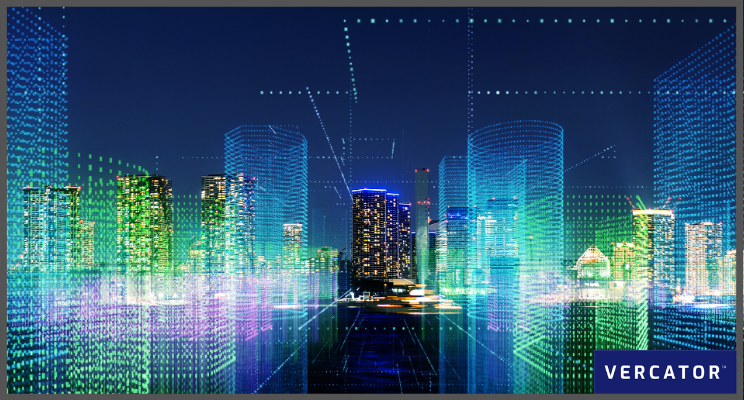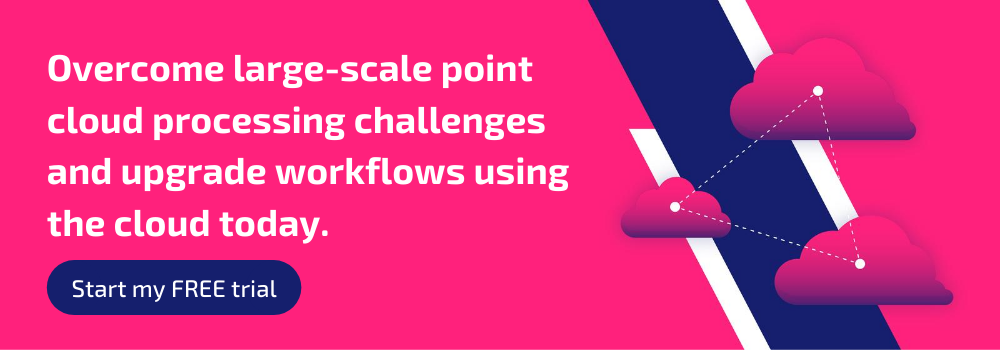How to Deploy 3D Reality Capture for Building Construction

Technology plays a significant role in managing, creating, and maintaining the built environment. While it’s understandable that we tend to focus on rapidly evolving hardware technology and gadgets, we should not underestimate how many relatively unnoticed advances have culminated in significant changes, creating new best practice.
The maturity of reality capture hardware has made it possible for software developments to lead the way. Robust standardisation of hardware capabilities, ranging from stationary LiDAR scanners to GPS-enabled mobile devices, has led to an explosion of data and new software choices.
The real value of reality capture lies in providing information that allows you to make informed decisions and, ultimately, keep projects on-time, on budget, and in specification. Let's look at some of the applications where 3D reality capture is making a real difference within the construction industry.
Suggested reading: If you want to learn more about the software advances that have improved accessibility of reality capture technology, check out our ebook — Point Cloud Processing Has Changed.
1. Scan-to-BIM
The adoption and development of Building Information Modelling (BIM) has increased the ROI of investing in reality capture technologies by improving accessibility to scan data across a construction project.
Scan-to-BIM is typically used on projects where details of an existing building need to be captured, such as renovations. However, it has also proven useful in new build projects to create a record of the existing context and structures, along with simplifying planning in restrictive or hazardous environments — bringing a number of different benefits.
- As-built modelling: Most as-built documents are inaccurate and incomplete. Designing renovations based on old drawings means that errors are "designed in." Scanning will give you accurate permanent records. Scan data can then be used to evaluate work on a weekly or daily basis. Individual scans can be dropped into a BIM environment, making conflicts easy to identify.
- Site awareness and visualisation: 3D reality capture lets you see accurate as-built information before work starts. You can capture all visible elements of a structure and produce a view of existing conditions in a fraction of the time it would otherwise take.
- Managing schedules: Reality capture scanners can monitor daily construction progress. Actual progress can be mapped against the estimated schedule. This can highlight where the timeline is off-target and likely completion dates and provide estimates on what additional resources might be needed to get back on track.
How to execute:
The "to-BIM" part of Scan-to-BIM is important to keep in mind. It transforms disparate point clouds into an intelligent 3D model of the entire project — and creates a platform for building on those scans with additional annotations and details. However, not all BIM is the same. Only database-first BIM Level 3 can deliver improved construction workflows needed to maximise the ROI of scan-to-BIM strategies, and effectively provide access to scan data across your team. For more information on BIM, check out our ebook — The Ultimate Guide to BIM.
Effective and agile deployment of laser scans within a Scan-to-BIM context also requires investing in registration software that can accelerate your workflows and automate the registration process — more on that in the next section.
2. BIM-to-Field
Optimised BIM application requires integrated scanning of the site throughout the whole construction process. This is to ensure the real world is represented in the model and vice versa. BIM-to-Field is the mirror image of Scan-to-BIM. Data is downloaded, validated on-site using scanners, and then fed back into the model. This enables:
- Clash detection/avoidance: As the design and the number of disciplines involved in the design grow, the chances of soft, hard and workflow clashes also grow. Two objects occupying the same space in a design will result in overlapping — this is known as a hard clash. Soft clashes are due to an object not being given the correct tolerance, and this is where BIM-to-Field can really help identify these small errors. Fundamentally, clash avoidance is not a one-time process. It needs to be maintained throughout the construction lifecycle
- Deviation reporting: By comparing regular scan data to BIM planning, scan data can be compared with as-designed models exposing inaccuracies early in the process and reducing risk. Such quality checks help avoid expensive rework, saving additional spend and reducing delays.
- On-site dispute resolution: On-site disputes are one of the leading causes of construction ineffectiveness. But when data is validated from BIM-to-Field, all stakeholders have access to a single system of record, with disputes about the building development reducing accordingly.
How to execute:
BIM-to-Field workflows require a lot of scanning. To effectively deploy reality capture technology to cross-check outputs with planning, you need reality capture solutions that are fast, agile and automated. At Vercator, we’ve developed cloud-enabled point cloud processing software able to significantly accelerate scan registration using a patented vector-based and multi-stage registration algorithm. Start a free trial of Vercator to learn more. However, there are some broader points that you can use to judge the efficacy of any point cloud processing software.
- Hands-off processing: You need tools that allow you to frontload manual tasks so that most of the processing can be undertaken without supervision.
- Cloud-ready processing: Cloud technology enables the scaling of computing power, which can help overcome large datasets and accelerate overall processing times, as well as simplify the sharing of that data.
- Future-focused development: There are rapid developments regarding automated point cloud data classification and point cloud feature extraction that are poised to significantly improve data extraction from reality capture data sets. Tools at the forefront of these developments will prove to be better long-term investments.
With this context in mind, you then need to create workflows that enable you to capture the information required. This basic process requires you to:
- Create baselines: Taking frequent, accurate measurements of a construction site is half of the equation. To unlock the real value of reality capture, you need a baseline to compare against.
- Set up routine scans: When brought together, laser scanning can transform BIM from a set of static blueprints into a living model. Because routine laser scans document a project as it progresses, you can compare the captured data against the original BIM.
- Spend more time at the planning stage: Better planning upfront will allow up to consider innovations such as on-site robots and off-site prefabrication. 3D reality capture can help you evaluate and try-out some of these game-changing technologies.
3. SLAM and wearables
Reality capture is becoming even faster and more accessible, and SLAM (Simultaneous Localisation and Mapping) is an excellent example of this. Primarily, SLAM is quick and easy. Compared to traditional static laser scanners, SLAM-enabled scanners' mobile nature delivers far simpler and accelerated workflows.
A significant benefit of SLAM in 3D reality capture comes from repetition. It’s fast and easy, so it’s possible to use it repeatedly across the lifecycle of a project. The more often an area is mapped, the more current the data is, and the more valuable it is. Wearable scanners are hugely attractive to up the scanning rate, especially if there might be safety, access or security issues to consider. Mobile scanning can even be deployed by autonomous robotics — for example, Doxel.
How to execute:
The challenge with SLAM is accuracy. Mobile scanning introduces an additional variable, and that limits the precision of the scans that can be produced. SLAM is most effectively deployed where rougher scans can be used, and structured measurements don’t need to be taken based on that data.
In order to effectively deploy SLAM (and mobile scanning more generally), you need software that’s able to combine mobile scanning outputs with the outputs of static scanners. Again, this is an area of significant development within the industry, and one that we are pioneering at Vercator.
Suggested reading: If you want to learn more about SLAM, and how it can be used in conjunction with other datasets, check out our ebook — How SLAM Enables the Evolution of Wearable Reality Capture Technologies.
Software is the future
"We tend to overestimate the effect of a technology in the short run and underestimate the effect in the long run" — Roy Amara
The future is nearer than we think. Automation and robotics are already impacting construction, and reality capture sensors are already generating vast quantities of data that can be turned into actionable information.
The key to success in reality capture is figuring out why you need data, what data you need, how best to capture this, and how you plan to use it. By deploying cloud-based software, you have the means to coordinate the complete range of scanning technologies to form a full interpretation of a site or environment. Check out our guide to 3D Laser Scanning Software to learn more.
Tags: data set, LiDAR, automation, Vercator


